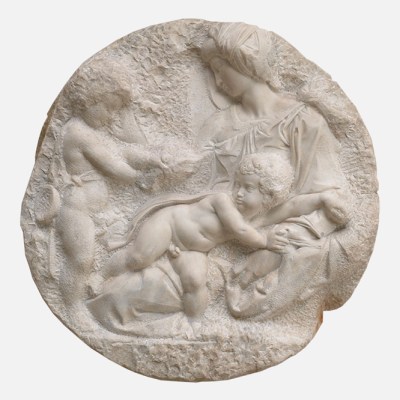It is a sad state of affairs that leaves a museum board and its director no option but to sell works from its collection in order to survive. A number of widely publicised deaccessions from US museums have been announced this autumn, a trickle likely to turn into a stream, if not a torrent, in light of the pandemic and the decision of the Association of the Art Museum Directors not to censure or sanction financially pressed institutions meeting operating costs through sales. This week, on 15 October, the Brooklyn Museum is offering 12 Old Master and 19th-century paintings at Christie’s in New York, and the Baltimore Museum of Art hopes to gain $65m from sales of valuable works by Brice Marden, Clyfford Still and Andy Warhol at Sotheby’s on 28 October. But another sale, at Sotheby’s in London on 27 and 28 October, has received comparatively little attention. Here, more than 250 works go to the block from a world-class collection that is not only unique in its own region but also plays an important social, cultural and educational role in one of the globe’s most divided communities.
The Museum for Islamic Art in Jerusalem was founded and endowed by Vera Bryce Salomons, opening its doors five years after her death in 1969. She was the great-niece and heir of Sir David Salomons – banker, civil rights activist and the first Jewish Lord Mayor of London and Member of Parliament (although his refusal to swear the obligatory oath ‘on the true faith of a Christian’ precluded him from serving there). A change of law giving equal rights to minorities in Britain was a result of his eloquence and legal acumen. His descendent was cast from the same mould, and her decision to establish a museum illustrating the splendour of Islamic art in a Jewish neighbourhood in Jerusalem was intended to foster understanding and build bridges between cultures.
Salomons dedicated the museum – originally named the L.A. Mayer Institute of Islamic Art – to her friend and teacher Professor Leo Arie Mayer, a specialist in the archaeology and art of the Middle East. His collection formed its core holdings, which were supplemented by Salomons – latterly through the expertise of the art historian and curator Richard Ettinghausen, who had transformed the Freer Gallery of Art in Washington, D.C. into one of the foremost collections of Islamic art in the world. For a dozen years, Ettinghausen judiciously selected works for the museum in Jerusalem. There are objects in all media from across the Muslim world, from the seventh to the 19th century.
The Prince Regent’s No. 2788, produced by Breguet in 1812–18. Sotheby’s, London (estimate £400,000–£600,000)

The museum also houses part of the exceptional collection of watches, clocks, automata and other objets de vertu amassed by Vera Bryce Salomons’ father, another Sir David, who was an engineer and industrialist. These included 57 timepieces made by the peerless Abraham-Louis Breguet, including that Mona Lisa of watches, the ‘Marie-Antoinette’, valued at $30m in 1983 when it was stolen along with more than 100 other pieces in the biggest watch heist in history. All but 10 have since been recovered. Sadly, with this month’s sale, 64 of the pieces remaining in this collection will never return. Unlike the Islamic objects selected for auction, the majority of which have been kept in storage, a number of the watches leave the museum’s permanent displays. The highlights include a rare experimental ‘resonance’ watch in gold, one of the most expensive watches ever sold by Breguet, bought for a mighty £350 by the Prince Regent, the future George IV, in 1818 (estimate £400,000–£600,000). Another innovative but elegant piece, with an in-built thermometer, was produced by Breguet for Napoleon’s sister, Princess Murat, at a cost of 4,000 francs (£200,000–£300,000).
The Times of Israel reports that the museum’s financial difficulties are not new. But Covid-19 has proved the final straw, as government regulations have closed museums in the country for a second time. Director Nadim Sheiban – who in 2014 became the first Israeli Arab museum director in the country – said: ‘We were afraid we could lose the museum and be forced to close the doors. If we didn’t act now, we would have to shut down in five to seven years. We decided to act and not wait for the collapse of the museum.’
Illuminated Qur’an leaf with eastern Kufic script (c. 1075–1125), Iran or Central Asia. Sotheby’s, London (estimate £200,000–£300,000)

Many of the 190 lots of Islamic objects on offer have an extraordinary provenance. A 13th-century Mamluk enamelled glass bowl, for instance, came to the museum from the esteemed collection of George Eumorfopoulos and was shown at the International Exhibition of Persian Art at the Royal Academy of Arts in 1931 (£60,000–£80,000). From the Rothschilds and Mentmore Towers came a Mughal rock-crystal bowl (£25,000–£35,000). Several objects once belonged to the Armenian-American archaeologist Hagop Kevorkian, including a rare silver-inlaid Aq Qoyunlu or ‘White Sheep’ turban helmet probably made in 15th-century Eastern Anatolia (£400,000–£600,000). Among other rarities is an early Iznik blue-and-white hanging ornament of around 1480 bearing a Qur’anic inscription (£180,000–£220,000). And of arresting beauty is the eastern Kufic script on a leaf originating from an 11th- or 12th-century Persian Qur’an (£200,000–£300,000). The Islamic works offered on 27 October are expected to realise £3.25m–£4.8m; the watches and objets de vertu offered the following day, £1.8m–£2.7m.
The sales ‘Select Works from the L.A. Mayer Museum for Islamic Art, Jerusalem’ and ‘Important Watches: Including the Salomons Collection’ take place at Sotheby’s, London, on 27 and 28 October.



